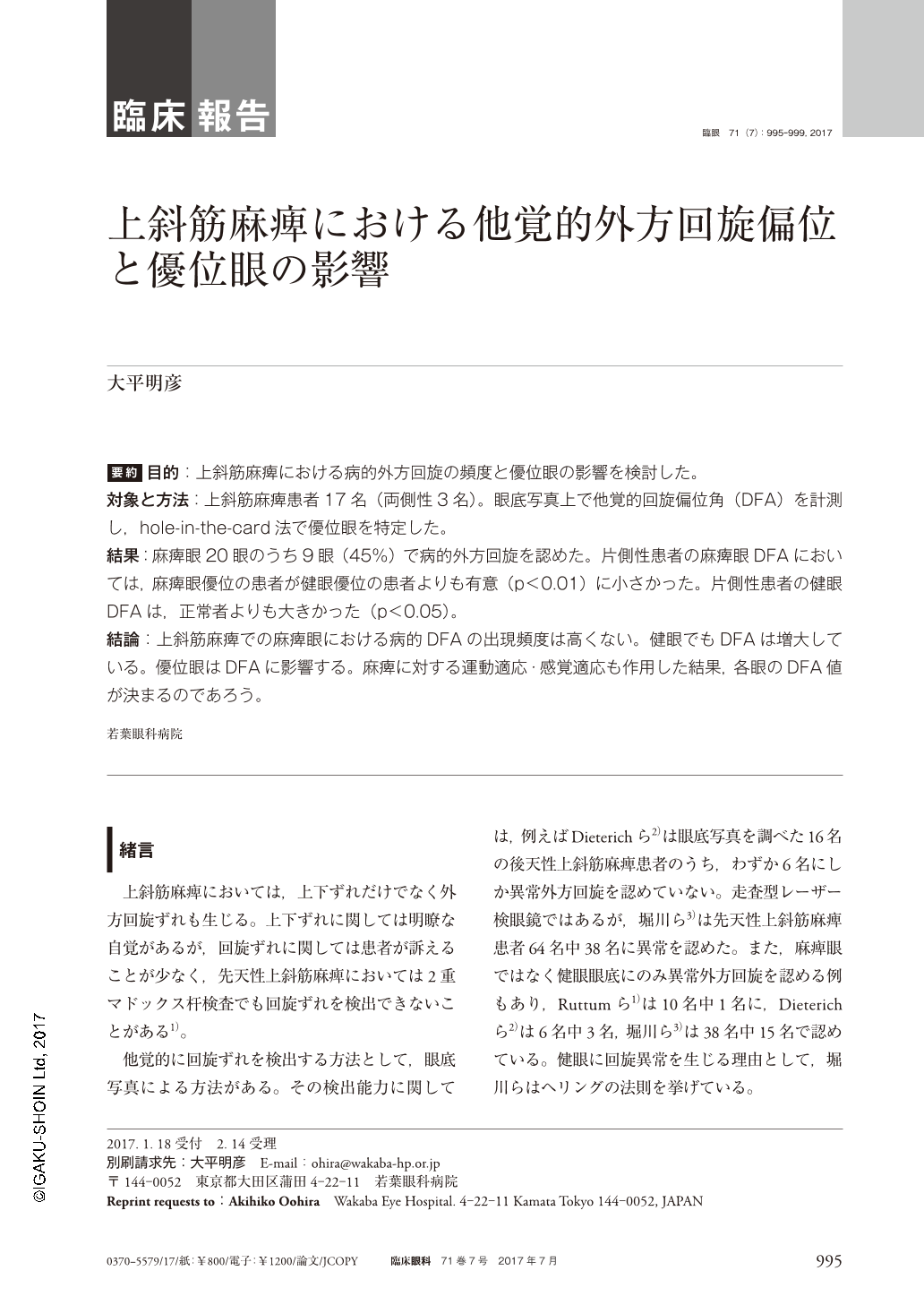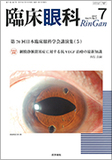Japanese
English
- 有料閲覧
- Abstract 文献概要
- 1ページ目 Look Inside
- 参考文献 Reference
要約 目的:上斜筋麻痺における病的外方回旋の頻度と優位眼の影響を検討した。
対象と方法:上斜筋麻痺患者17名(両側性3名)。眼底写真上で他覚的回旋偏位角(DFA)を計測し,hole-in-the-card法で優位眼を特定した。
結果:麻痺眼20眼のうち9眼(45%)で病的外方回旋を認めた。片側性患者の麻痺眼DFAにおいては,麻痺眼優位の患者が健眼優位の患者よりも有意(p<0.01)に小さかった。片側性患者の健眼DFAは,正常者よりも大きかった(p<0.05)。
結論:上斜筋麻痺での麻痺眼における病的DFAの出現頻度は高くない。健眼でもDFAは増大している。優位眼はDFAに影響する。麻痺に対する運動適応・感覚適応も作用した結果,各眼のDFA値が決まるのであろう。
Abstract Purpose:To report the frequency of pathological objective extorsion of the eye in superior oblique palsy and to report the influence of eye dominancy on extorsion.
Cases and Method:This study was made on 17 patients with superior oblique palsy. Three cases were bilaterally affected. The palsy was congenital in 8 cases, following trauma in 4, and secondary to vascular accident in 3. Two cases were children and 8 cases were aged more than 40 years. Disc-to-fovea angle was measured by fundus photography of both eyes. Dominant eye was determined by hole-in-the-card method.
Results:Pathological fundus extorsion was present in 9 out of 20 involved eyes(45%). Disc-to-fovea angle of the paretic eye averaged 7.7±3.6 degrees when the paretic eye was the dominant eye. It was 17.5±2.4 degrees when the paretic eye was non-dominant. The difference was significant(p<0.01). Disc-to-fovea angle of the healthy eye averaged 11.0±3.5 degrees in unilaterally affected cases. The value was significantly larger than in healthy cases(p<0.05).
Conclusion:Frequency of pathologically increased disc-to-fovea angle was not high in superior oblique palsy. Disc-to-fovea angle in nonparetic eye was larger than normal. Disc-to-fovea angle was influenced by eye dominancy. Size of disc-to-fovea angle may be influenced by motor and sensory adaptations.

Copyright © 2017, Igaku-Shoin Ltd. All rights reserved.


